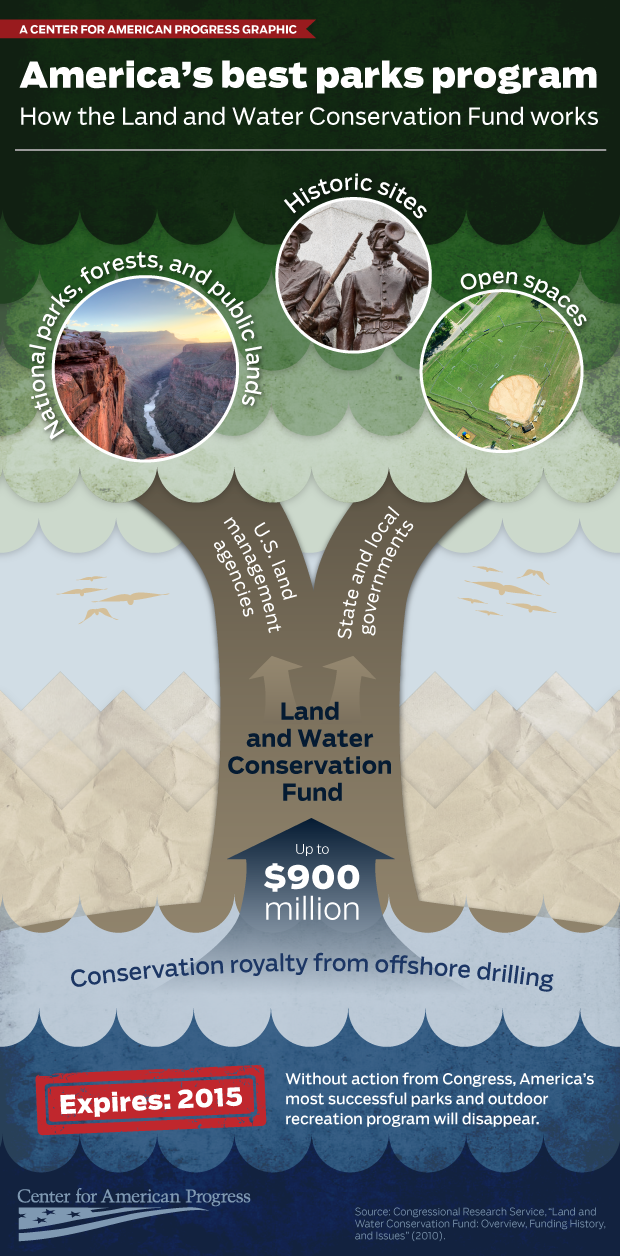Fifty years ago, President Lyndon Johnson signed into law the Land and Water Conservation Fund Act, establishing what has become the nation’s most effective program for protecting natural, historic, and cultural treasures for future generations. Funded by revenues from offshore oil and gas development—not taxpayer dollars—the Land and Water Conservation Fund, or LWCF, has supported more than 40,000 state and local outdoor recreation projects and helped protect more than 7 million acres of land, including some of America’s most iconic public lands such as Grand Canyon National Park and Yellowstone National Park. Every dollar invested in land conservation through the LWCF creates $4 in economic value.
September 3 marks 50 years of success for the Land and Water Conservation Fund. Without action by Congress, however, the fund will expire in 2015 and America will lose its best parks program.

Claire Moser is a Research and Advocacy Associate with the Public Lands Project at the Center for American Progress. Matt Lee-Ashley is a Senior Fellow and Director of the Public Lands Project at the Center. Nidhi Thakar is Deputy Director of the Public Lands Project at the Center. Pete Morelewicz is the Center’s Art Director. Preeth Srinivasaraghavan was an intern with the Public Lands Project at the Center.